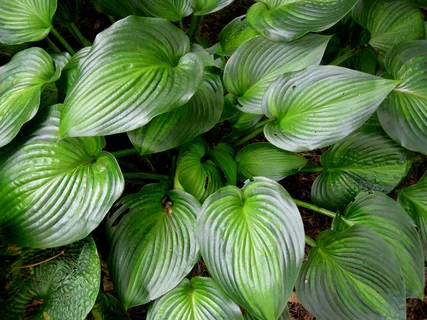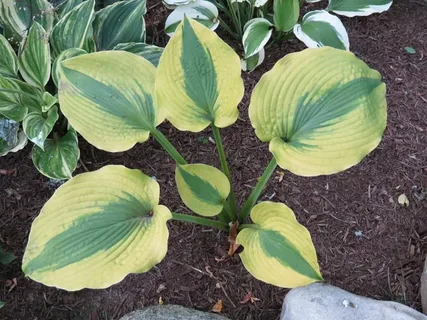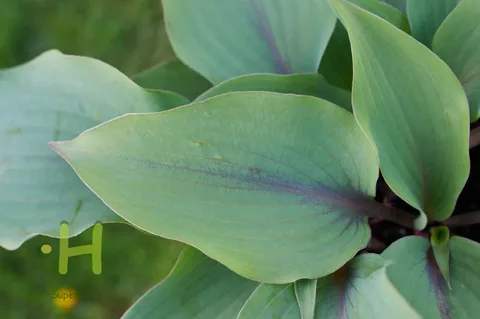Introduction
In the tapestry of garden flora, few plants captivate with the same allure as blue hostas. Renowned for their enchanting blue-green foliage, these plants have carved a niche in the hearts of garden enthusiasts worldwide. Beyond their aesthetic charm, blue hostas boast versatility, resilience, and a spectrum of varieties, making them a captivating choice for gardens of all styles. As we embark on an exploration of these botanical wonders, we’ll delve into their unique characteristics, ideal growing conditions, and the myriad ways in which they enhance landscapes, inviting both seasoned and budding gardeners to appreciate the understated elegance of blue hosta.

Table of Contents
Aesthetic Beauty of Blue-Green Foliage: Unraveling the Enigma of Blue Hostas
The allure of blue hosta begins with their mesmerizing foliage, a distinctive feature that sets them apart in the world of gardening. The intriguing hue of their leaves, ranging from powdery blues to deep greens, is a testament to the unique chemistry within these plants.
1. Understanding the Blue-Green Spectrum:
Blue hosta derive their name from the captivating spectrum of blue-green colors that adorn their leaves. The intensity and shade of this color vary among different varieties, adding a layer of complexity to their aesthetic appeal. Some cultivars exhibit a powdery blue tint, reminiscent of a tranquil summer sky, while others showcase a deeper, more saturated greenish-blue.
2. Factors Influencing Coloration:
The coloration of blue hosta is a fascinating interplay of genetics, environmental conditions, and pigmentation. The presence of a unique pigment called anthocyanin contributes to the blue color, with its concentration influenced by factors such as sunlight exposure, soil pH, and hydration levels. This intricate dance of elements results in the kaleidoscope of blues and greens that define these plants.
3. Leaf Shape and Texture:
Beyond their color, the leaves of blue hosta exhibit a diverse array of shapes and textures. Some feature broad, heart-shaped leaves, while others boast slender, lance-like forms. The texture can range from smooth to heavily textured, adding another dimension to their visual appeal. This variety in leaf characteristics allows gardeners to curate landscapes with a rich tapestry of shapes and patterns.

5. Capturing the Elegance in Photography:
Blue hosta are a favorite subject for garden photographers, and for good reason. The camera lens can capture the nuances of their color and texture, freezing moments of their seasonal evolution. Photographs of dew-kissed leaves in the early morning or the interplay of sunlight filtering through the foliage showcase the ethereal beauty of blue hosta.
6. Integrating Blue Hostas into Garden Designs:
The aesthetic appeal of blue hosta extends beyond their individual beauty to their role in garden design. These plants serve as versatile anchors in various garden styles, from traditional to contemporary. Their cool color palette complements warmer tones and provides a calming presence in shaded areas. Considerations of height, texture, and color contrast play key roles in strategically incorporating blue hosta into different sections of a garden.
7. Potted Blue Hostas: A Portable Elegance:
For those with limited garden space or an inclination toward container gardening, blue hosta thrive in pots and containers. This versatility allows enthusiasts to create captivating displays on patios, balconies, or even indoors. The compact nature of potted blue hosta makes them excellent choices for adding a touch of elegance to small spaces.
8. Blue Hostas in Floral Arrangements:
The beauty of blue hosta extends beyond the garden bed. Gardeners often harvest their leaves to incorporate into floral arrangements, adding a unique and natural element to bouquets. The leaves’ vibrant color and interesting textures provide an unconventional yet striking addition to floral designs.
Conclusion of the First Talking Point:
In unraveling the aesthetic beauty of blue hosts, we’ve explored the intricate details that make these plants a visual masterpiece. From the captivating color spectrum to the diverse leaf shapes and textures, blue hosta offer an enchanting canvas for gardeners to express their creativity. As we continue our journey into the world of blue hosta, we’ll delve into the practical aspects of cultivating these plants, understanding their ideal growing conditions, and exploring the various varieties that grace gardens with their captivating presence.

Frequently Asked Questions (FAQs) – Blue Hostas in Gardening
- What makes blue hostas unique in the world of gardening?Blue hosta are renowned for their distinctive blue-green foliage, adding a unique and captivating element to garden landscapes.
- Do all blue hostas have the same shade of blue?No, different varieties of blue hosta exhibit varying shades of blue, ranging from powdery blues to deeper, more saturated greens.
- What factors influence the coloration of blue hostas?The coloration of blue hosta is influenced by genetics, environmental conditions, and the presence of pigments like anthocyanin. Sunlight exposure, soil pH, and hydration levels play key roles.
- How do I choose the right blue hosta for my garden?When choosing a blue hosta, consider factors such as the specific shade of blue you prefer, the size and shape of the leaves, and the overall aesthetic you want to achieve in your garden.
- Are blue hostas only known for their color, or do they have other distinctive features?Beyond their color, blue hostas exhibit a diverse array of leaf shapes and textures. Some are broad and heart-shaped, while others are slender and lance-like.
- Can blue hostas be grown in pots or containers?Yes, blue hosta thrive in pots and containers, making them versatile for gardeners with limited space or those who prefer container gardening.
- Do blue hostas require special care or maintenance?Blue hosta are known for their resilience and relatively low maintenance. Providing them with the right growing conditions, including suitable soil, water, and shade, will help them thrive.
- Are blue hostas suitable for different garden styles?Yes, blue hosta are versatile and can complement various garden styles, from traditional to modern. Their cool color palette makes them especially appealing in shaded areas.
- Can I use blue hostas in floral arrangements?Absolutely. The leaves of blue hosta are often harvested for use in floral arrangements, adding a unique and natural element to bouquets.
- How do I incorporate blue hostas into garden designs?Integrating blue hostas into garden designs involves considering factors like height, texture, and color contrast. They can serve as focal points or provide a calming presence in shaded areas.
- Do blue hostas change color throughout the growing season?Yes, the color of blue hosta can evolve throughout the growing season. Factors like temperature and sunlight influence the intensity and hue of their blue-green foliage.
- Are blue hostas resistant to pests and diseases?While blue hostas are generally hardy, they can be susceptible to certain pests like slugs and snails. Implementing good gardening practices, such as keeping the garden clean and well-maintained, can help prevent common issues.
 Nextezone: Igniting Tomorrow's Potential with Innovation Today Innovate. Explore. Elevate. Nextezone – Where Vision Meets Innovation.
Nextezone: Igniting Tomorrow's Potential with Innovation Today Innovate. Explore. Elevate. Nextezone – Where Vision Meets Innovation.
